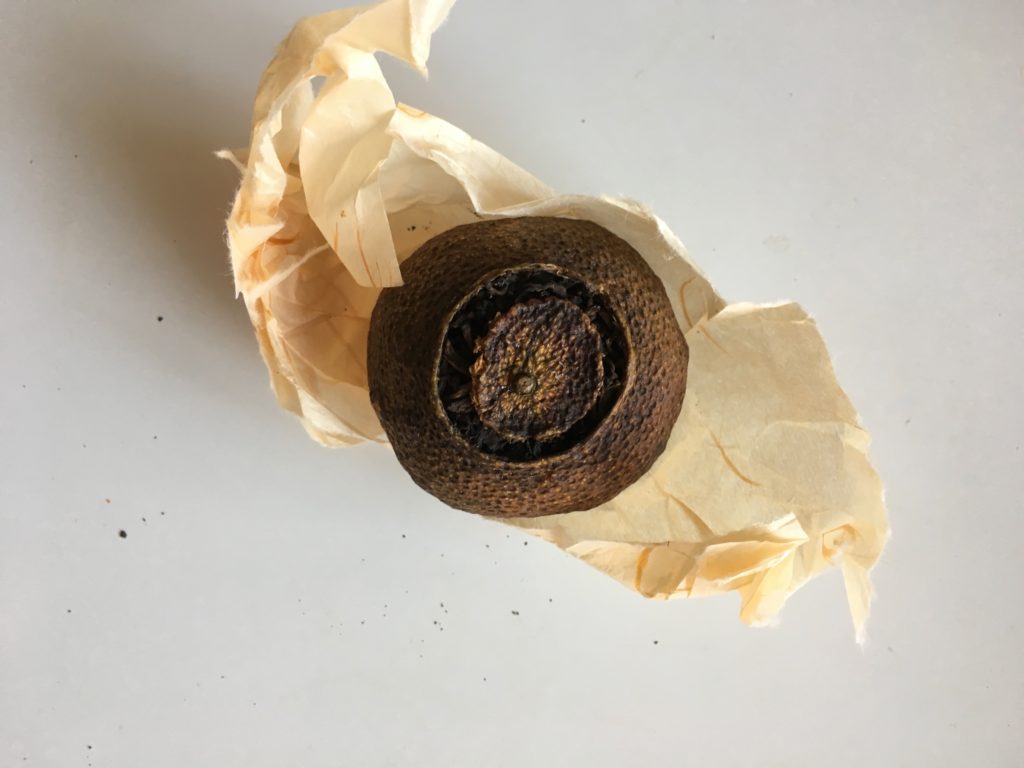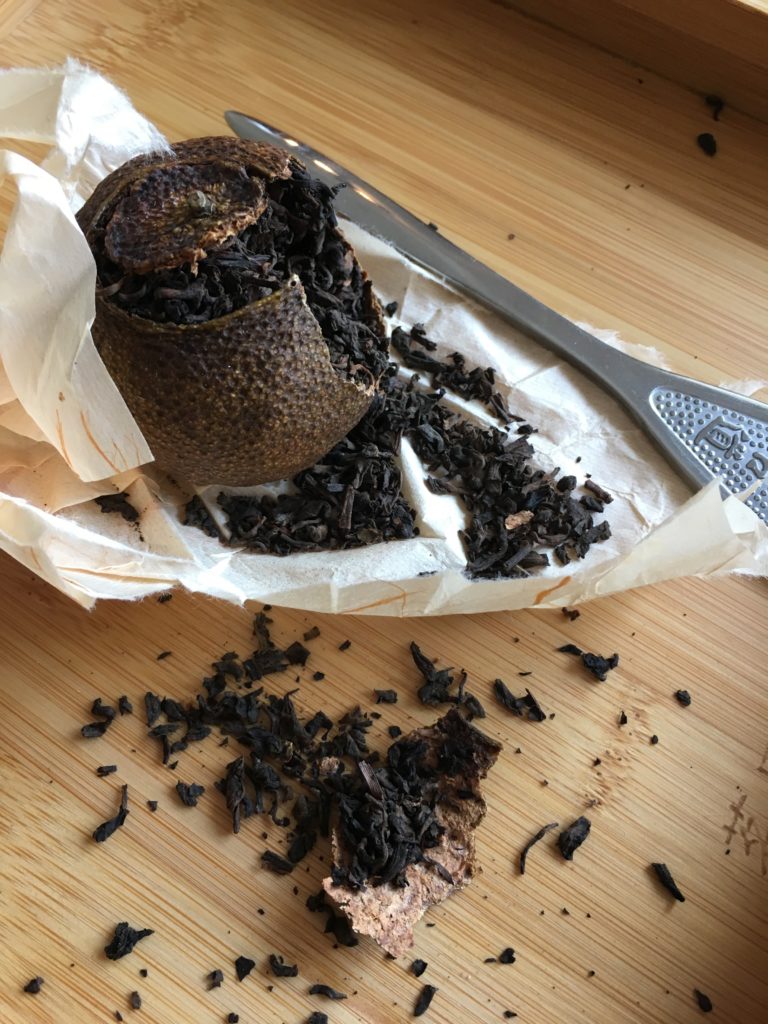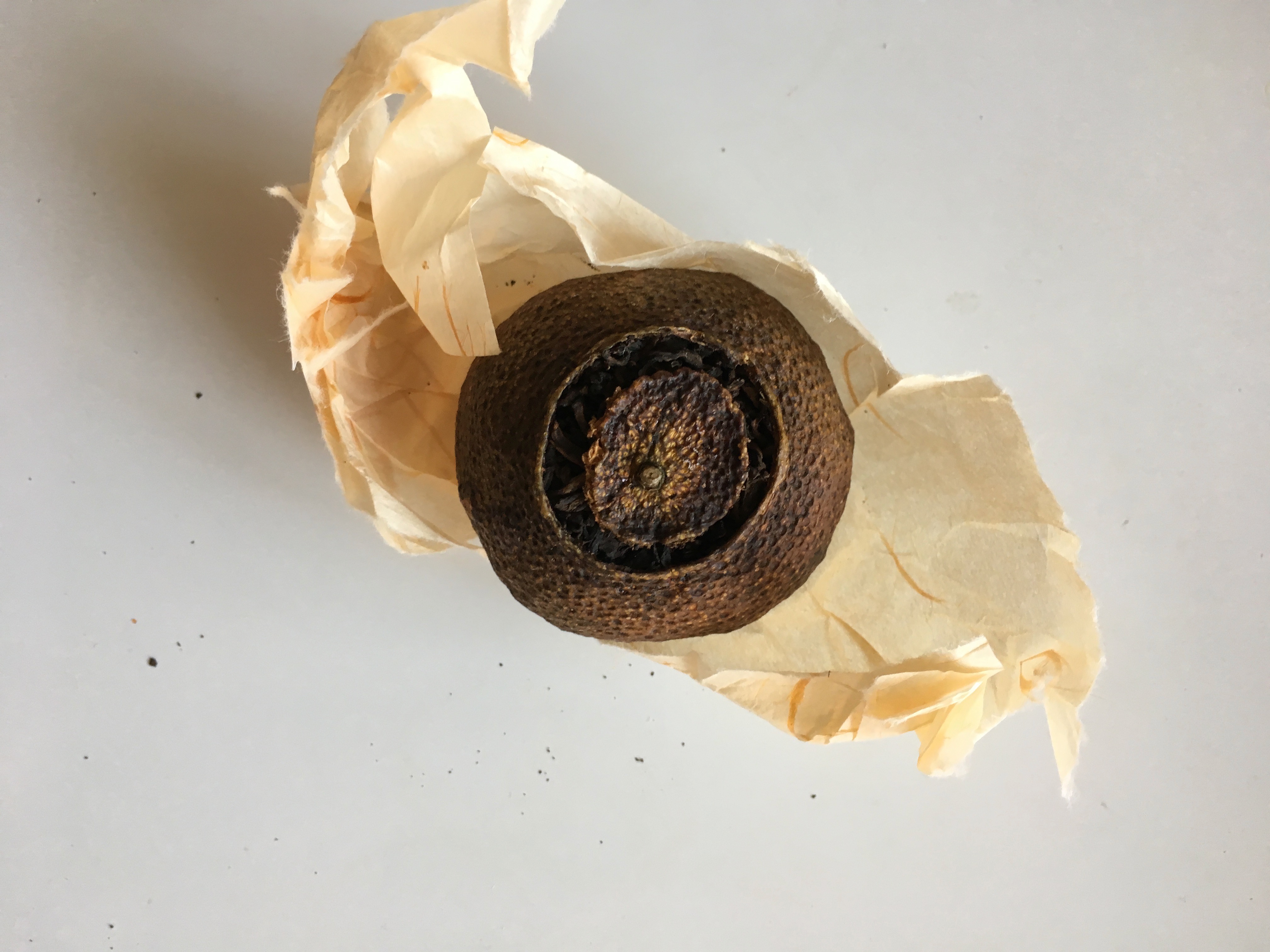chenpi (陳皮) means preserved peel, and refers to the dried skin of a special mandarin. The peel is used for cooking and used widely in TCM. The best peels supposedly come from Xinhui, Guangdong; and increase in worth with age. The flavour of the peel changes as it ages, and its reputed healing powers improve.

More interesting for us, however, is ganpu tea: The Xinhui mandarins are hollowed, filled with puer tea and then dried. They then may be aged, allowing the tea to absorb the essential oils of the fruit and the peels to age further. The warm, earthy aromas of the aged puer go well with the slight bitterness and fragrance of the peels. In my experience, younger ganpu teas retain more of the mandarin zestiness and astringency, while older ones develop a more medicinal flavour.
Preparation

When brewing the tea, use both the skin of the mandarin and the tea. Aim for a 8:1 ration between tea and peel. Then brew gong fu cha style.
TCM
Both the aged puer and the peel are warm. The peel is said to help digestion and coughs by working on LU and SP meridians.
Tastings
Sources
